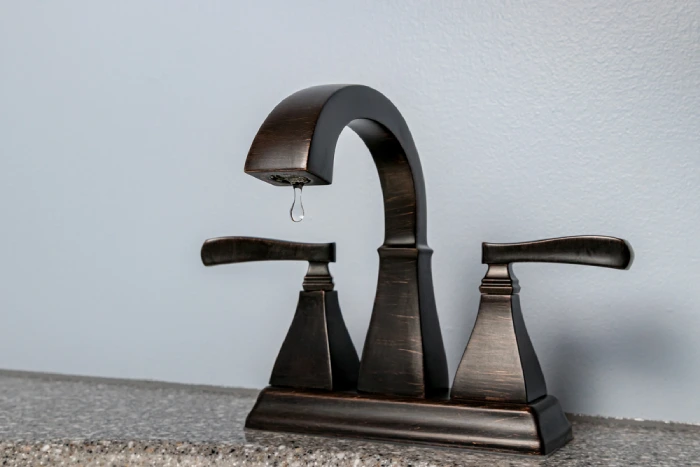
Have you ever turned on your shower only to be greeted by a feeble trickle of water? Low water pressure can be a frustrating and common problem that homeowners face. Thankfully, there are several causes of water pressure issues, and with a little know-how, you can often resolve them yourself or with the help of a trusted plumber. We'll explore some of the main culprits behind low water pressure and provide practical solutions to help you regain that invigorating flow you desire.
At Mr. Rooter Plumbing, we understand the importance of strong and consistent water pressure throughout your home. Our team of experienced plumbers in Rochester, NY has encountered a wide range of water pressure problems, and we're here to assist you in finding the best plumbing solutions. Whether it's a simple fix like cleaning out a clogged faucet aerator or a more complex issue with your plumbing system, our experts are ready to help. When in doubt, contact the plumbing experts at Mr. Rooter Plumbing!
Causes of Low Water Pressure
Issues With an Outside Entity
Sometimes, low water pressure is not necessarily a problem with your own plumbing system, but rather, it can be caused by issues with an outside entity. For example, the water supplier may be experiencing problems or undergoing maintenance, leading to temporary low water pressure in your area. Additionally, changes in city regulations or infrastructure upgrades can also impact water pressure. In such cases, it's best to contact your water supplier or local authorities to inquire about any ongoing issues and get an estimated timeframe for resolution.
Water Valves Are Partially Closed
One of the simplest and often overlooked causes of low water pressure is partially closed water valves. There are two main valves to check: the main water shutoff valve and the water meter valve. The main water shutoff valve is typically located near your water meter or where the water line enters your home. Ensure that this valve is completely open. Additionally, the water meter valve, located near the water meter, might also be partially closed. Make sure this valve is fully open as well, as any obstruction can restrict the water flow and cause low water pressure.
A Failing Pressure Regulator
A failing pressure regulator can also contribute to low water pressure issues. The pressure regulator is a device that controls and maintains a steady water pressure level in your plumbing system. However, over time, these regulators can wear out or become faulty, leading to a drop in water pressure. If you suspect a failing pressure regulator, it's best to consult a professional plumber to assess the situation and make any necessary repairs or replacements.
It’s a Pipe Issue
Clogged, corroded, or leaking pipes can significantly affect water pressure. Accumulation of minerals, debris, or sediment can cause clogs, restricting the flow of water through the pipes. Corrosion, especially in older plumbing systems, can lead to the deterioration of pipes and subsequently decrease water pressure. Additionally, leaking pipes can result in water loss and reduced pressure. If you suspect that pipe issues are causing your water pressure problems, it's advisable to call a licensed plumber to inspect and address the specific pipe-related issue.
Faulty Plumbing Fixtures
If the low water pressure is isolated to one or a few fixtures in your home, the issue may lie within the fixture itself. Over time, faucets, showerheads, or aerators can become clogged with mineral deposits, affecting water flow. In such cases, you can try cleaning or replacing the affected fixtures to restore normal water pressure.
Sharing Water Lines
In some cases, low water pressure can be a result of multiple households or apartments sharing water lines. When there is a high demand for water within a shared system, such as during peak usage times or in large residential complexes, it can impact the water pressure for all users. Although there might not be much you can do to directly resolve this issue, contacting your property management or building owner to address the concern can help ensure that the water distribution system is properly designed and maintained to handle the demand.
Solutions
Check for Partially Closed Water Valves
One of the simplest solutions for low water pressure is to check for partially closed water valves. If either valve is partially closed, opening it all the way should help restore proper water pressure.
Clean or Replace Faucet Aerators and Showerheads
Remove the aerator or showerhead from the fixture and soak it in a vinegar solution overnight to dissolve any buildup. In the morning, rinse it thoroughly and reattach it to the fixture. Cleaning the aerators and showerheads can often improve water pressure significantly. Replacing faulty fixtures can also be an effective solution to improve water pressure.
Inspect and Clean Clogged Pipes
If you suspect that clogged pipes are the cause of low water pressure, you can try to clear the obstruction yourself using a plunger or a drain snake. Alternatively, you can use commercial drain cleaners or a homemade mixture of baking soda and vinegar to dissolve the clog. However, it's important to exercise caution and follow the instructions carefully when working with drain cleaners. If the clog persists or if you're uncomfortable attempting the fix yourself, it's best to consult a professional plumber.
Mr. Rooter Plumbing Can Help!
If you're facing persistent low water pressure and need expert help, don't hesitate to contact Mr. Rooter Plumbing. Our experienced plumbers have the knowledge and tools to diagnose and fix a wide range of water pressure problems efficiently and effectively. Schedule an appointment today and let us help you restore optimal water pressure in your Rochester, NY home.

